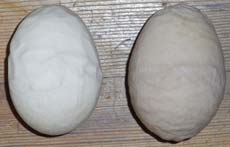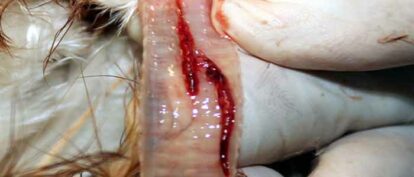Infectious bronchitis (I.B) is the most contagious poultry disease. It has very similar symptoms to mycoplasma. The main difference is the number of birds it affects.
Mycoplasma tends to affect a few birds in the flock but IB spreads within a few days to the whole flock. I.B. causes respiratory disease and kidney damage in growers and oviduct infection in adult hens which can cause wrinkled egg shells, as well as a reduction in egg laying. It can also affect the ability of the bird to produce thick albumen (white) which means eggs can have watery whites.
Commercial flocks and most hybrids are vaccinated against Newcastle disease and infectious bronchitis at the same time but as with all vaccines are not 100% effective all of the time (maybe 97-98%).

Survivors of infectious bronchitis are immune but will always be carriers, there is no cure. Backyard flocks still carry a lot of IB in the UK. Chickens continue to lay once they have recovered but eggs are usually wrinkled and whites are watery because the oviduct is permanently damaged. These eggs may be fine for cooking but are not aesthetically pleasing when fried or poached because they spread out so much.
Species Affected: All but especially turkeys and chickens.
Other Names: I.B, avian infectious bronchitis.
Symptoms: In growers: Gasping, coughing and wheezing / chirping. After a couple of weeks, sometimes nervous system problems – twisted neck, droopy wings, dragging legs. In adults: Wheezing, green droppings, soft-shelled eggs or drop in egg production and later on, nervous system symptoms twisted neck, droopy wings, dragging legs, death. Sometimes mortality rate can be very high, especially during colder weather.
Causes: Coronovirus.
Transmission: By inhaling the virus via respiratory discharges from carriers or ingesting it via excretions e.g contaminated feed.
Diagnosis: Symptoms above and post-mortem findings.
Prevention: Vaccination (Intervet) if in a high risk area, good biosecurity.
Treatment: Keep sick birds warm and watch for secondary infections. Vitamin supplements in the water.
Risk to Human Health: None known.
Similar Diseases
There are a number of diseases which can produce similar signs:





